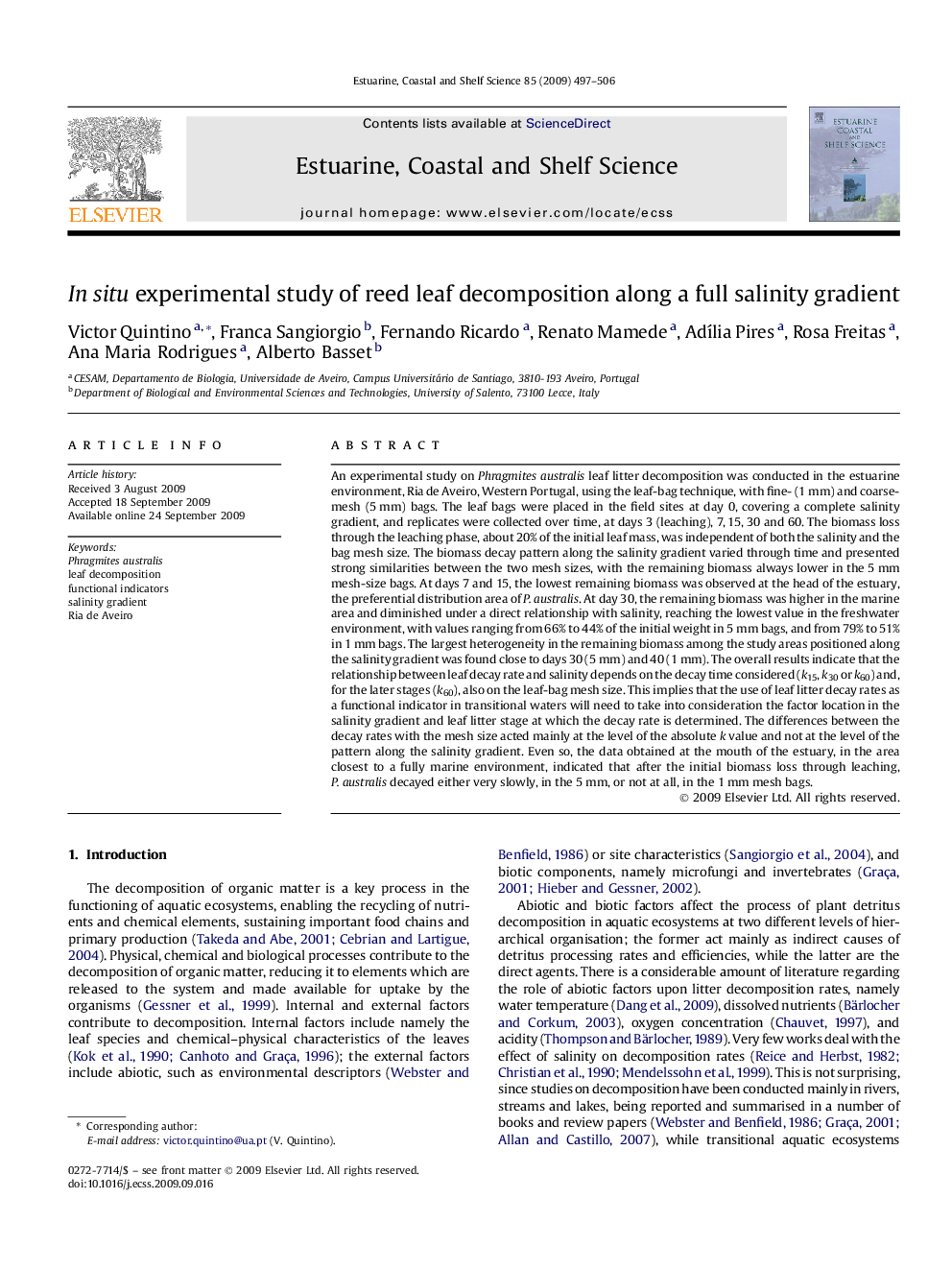| Article ID | Journal | Published Year | Pages | File Type |
|---|---|---|---|---|
| 4540727 | Estuarine, Coastal and Shelf Science | 2009 | 10 Pages |
An experimental study on Phragmites australis leaf litter decomposition was conducted in the estuarine environment, Ria de Aveiro, Western Portugal, using the leaf-bag technique, with fine- (1 mm) and coarse-mesh (5 mm) bags. The leaf bags were placed in the field sites at day 0, covering a complete salinity gradient, and replicates were collected over time, at days 3 (leaching), 7, 15, 30 and 60. The biomass loss through the leaching phase, about 20% of the initial leaf mass, was independent of both the salinity and the bag mesh size. The biomass decay pattern along the salinity gradient varied through time and presented strong similarities between the two mesh sizes, with the remaining biomass always lower in the 5 mm mesh-size bags. At days 7 and 15, the lowest remaining biomass was observed at the head of the estuary, the preferential distribution area of P. australis. At day 30, the remaining biomass was higher in the marine area and diminished under a direct relationship with salinity, reaching the lowest value in the freshwater environment, with values ranging from 66% to 44% of the initial weight in 5 mm bags, and from 79% to 51% in 1 mm bags. The largest heterogeneity in the remaining biomass among the study areas positioned along the salinity gradient was found close to days 30 (5 mm) and 40 (1 mm). The overall results indicate that the relationship between leaf decay rate and salinity depends on the decay time considered (k15, k30 or k60) and, for the later stages (k60), also on the leaf-bag mesh size. This implies that the use of leaf litter decay rates as a functional indicator in transitional waters will need to take into consideration the factor location in the salinity gradient and leaf litter stage at which the decay rate is determined. The differences between the decay rates with the mesh size acted mainly at the level of the absolute k value and not at the level of the pattern along the salinity gradient. Even so, the data obtained at the mouth of the estuary, in the area closest to a fully marine environment, indicated that after the initial biomass loss through leaching, P. australis decayed either very slowly, in the 5 mm, or not at all, in the 1 mm mesh bags.
